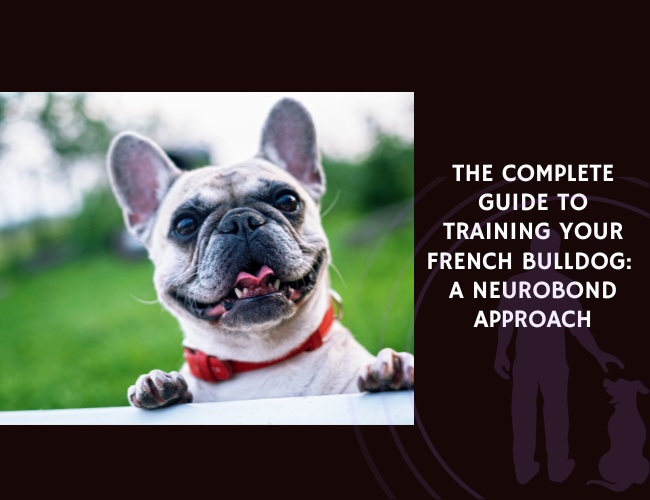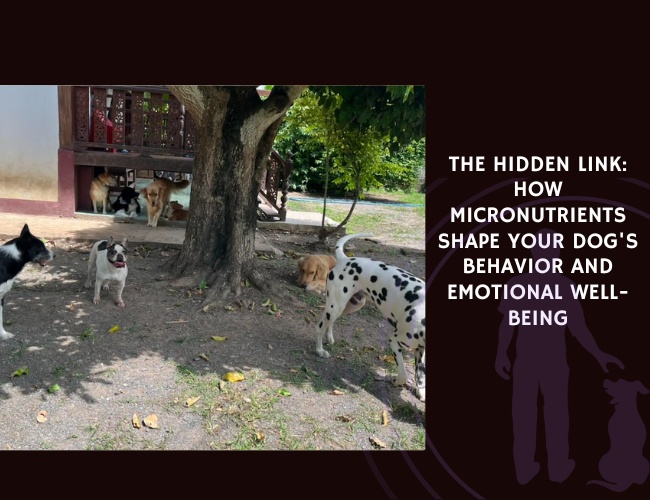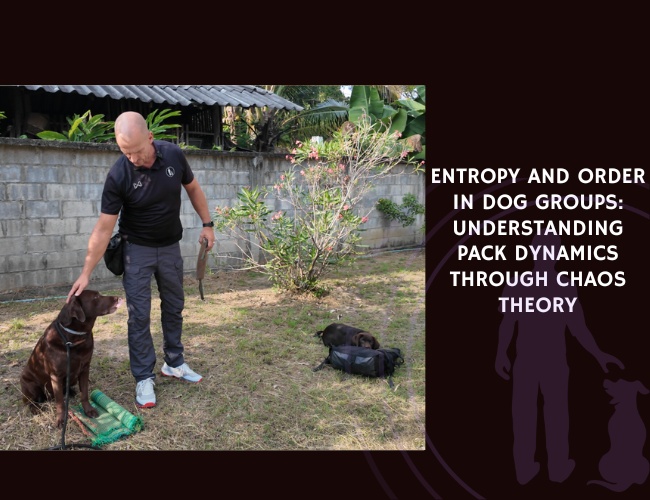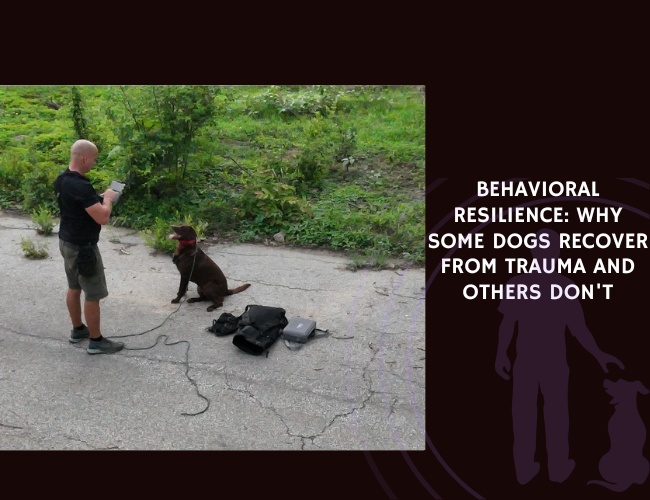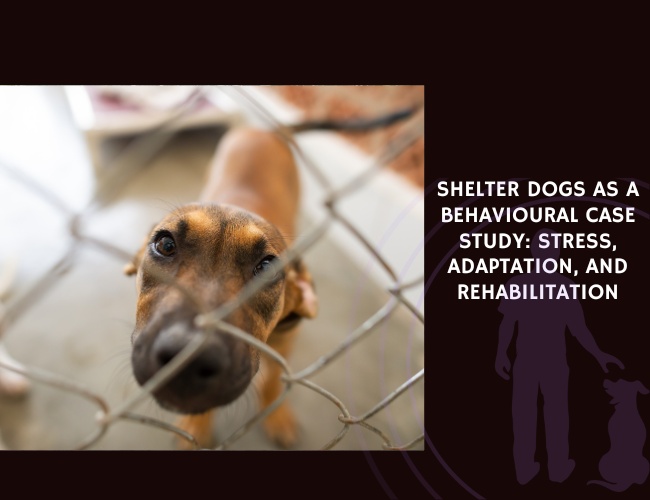Your French Bulldog gazes up at you with those soulful eyes, and in that moment, you realize you’re not just looking at a pet – you’re meeting a complex individual with their own logic, emotions, and ways of understanding the world. This little powerhouse, bred from centuries of companionship, carries within them both the gentle nature of a lap dog and the determination of their bulldog ancestors. Let us guide you through a revolutionary approach to training that honors your Frenchie’s unique personality while building an unbreakable bond.
Understanding Your French Bulldog’s Mind
The Cognitive Landscape of a Frenchie
French Bulldogs possess a fascinating cognitive profile that sets them apart from many other breeds. Their intelligence manifests not in blind obedience but in thoughtful consideration – they’re the philosophers of the canine world, often pausing to evaluate whether your request aligns with their current priorities. This isn’t stubbornness; it’s selective engagement, a trait that speaks to their independent thinking and problem-solving capabilities.
Neurological insights reveal that French Bulldogs process information through a filter of personal relevance. Their amygdala shows heightened activity when faced with unfamiliar situations, making them naturally cautious learners who prefer to understand the “why” behind commands. This means traditional drill-based training often falls flat with these contemplative companions.
Learning patterns unique to Frenchies:
- Sequential processing preference – they learn best when tasks are broken into clear, logical steps
- Strong contextual memory – what they learn in one environment may need reinforcement in another
- Reward-driven motivation centers that respond more to variety than repetition
- Enhanced social cognition that makes them excellent readers of human emotion
Your Frenchie’s brain is wired for connection, not compliance. They excel when training becomes a collaborative conversation rather than a one-sided directive. 🧡
Temperament Factors That Shape Training
The French Bulldog temperament is a beautiful paradox – simultaneously laid-back and intensely focused, independent yet deeply bonded to their humans. Understanding these seemingly contradictory traits is key to unlocking their training potential.
Sensitivity levels in French Bulldogs run deeper than many realize. Their emotional processing centers show increased activity in response to tone of voice and body language, making them exquisitely attuned to your mood. A harsh word can shut down their willingness to engage for hours, while genuine praise lights up their reward pathways like fireworks.
Energy distribution patterns follow a unique rhythm:
- Burst activity periods lasting 10-15 minutes
- Deep rest phases essential for processing learned behaviors
- Peak learning windows in early morning and evening
- Decreased performance in temperature extremes due to brachycephalic structure
The independence factor isn’t defiance – it’s self-preservation. French Bulldogs evolved to think for themselves, a trait that served them well in their working dog heritage. This means they’ll question commands that don’t make sense in their logical framework, requiring you to become a more thoughtful trainer.
Breed-Specific Behavioral Tendencies
Every French Bulldog carries genetic blueprints that influence their behavior, but these aren’t limitations – they’re starting points for building understanding.
Resource awareness runs strong in the breed. Not aggressive guarding, but a keen awareness of valuable items (including your attention). This stems from their history as companion dogs who needed to secure their place in busy households. In training, this translates to:
- High motivation for food rewards when used strategically
- Potential for attention-seeking behaviors if not properly channeled
- Natural inclination to “trade” behaviors for resources
Social navigation challenges often emerge around 6-14 months as your Frenchie develops their adult personality. They may show:
- Selective friendliness with strangers
- Same-sex dog reactivity in some individuals
- Protective instincts toward their primary human
Separation sensitivity affects many French Bulldogs more intensely than other breeds. Their attachment systems fire strongly, creating genuine distress when left alone. This isn’t manipulation – brain imaging shows actual stress hormone elevation during separation.
The NeuroBond Training Foundation
Building Trust Through Understanding
The NeuroBond approach begins with a radical shift in perspective: your French Bulldog isn’t a project to fix but a partner to understand. This philosophy recognizes that every behavior, even challenging ones, represents your dog’s attempt to navigate their world with the tools they have.
Creating the initial connection starts before any formal training:
- Spend 48-72 hours simply observing your Frenchie’s natural rhythms
- Note their self-soothing behaviors (these become training rewards later)
- Identify their stress signals and comfort zones
- Map their daily energy patterns
Trust-building exercises that work specifically for French Bulldogs:
- The Silent Sit – Simply sit near your Frenchie without demands, letting them choose to approach
- Synchronized Breathing – Match your breathing to theirs during calm moments
- The Choice Game – Offer two toys/treats and honor their selection every time
- Narrative Walking – Describe what you see on walks, creating verbal connection without commands
Your Frenchie’s trust account fills drop by drop, not in floods. Each positive interaction deposits into this account, while harsh corrections create massive withdrawals. 🐾
Establishing Communication Channels
French Bulldogs communicate through a rich vocabulary of sounds, body language, and behavioral choices. Learning their language precedes teaching them yours.
Vocalization patterns and their meanings:
- The “thinking grunt” – a low rumble indicating processing
- Alert barks – sharp, purposeful, meant to inform
- Contentment sighs – deep exhales showing relaxation
- Demand yodels – unique Frenchie sounds requesting attention
Body language decoder:
- Ear positioning tells emotional stories (forward = engaged, back = uncertain)
- Tail height indicates confidence levels
- Weight distribution shows intention (forward = interested, back = hesitant)
- Facial wrinkles change with mood states
Creating your shared language: Instead of imposing human communication styles, develop a hybrid language:
- Use consistent hand signals paired with words
- Develop unique sounds for specific situations
- Create rituals that signal transitions
- Build predictable patterns that reduce anxiety
The First 48 Hours: Setting Intentions
The initial bonding period sets the trajectory for your entire relationship. During these crucial first hours, you’re not training behaviors – you’re establishing the emotional foundation all future learning will build upon.
Hour 1-12: Decompression
- Provide a quiet, defined space
- Limit visitors and stimulation
- Offer water and food without hovering
- Observe from a distance, noting preferences
Hour 13-24: Gentle Exploration
- Open access to one additional room
- Sit on their level, avoiding looming
- Speak in narrative tones, not commands
- Begin scent exchange through shared blankets
Hour 25-48: First Connections
- Introduce the concept of “checking in” – reward any voluntary eye contact
- Start the “name game” – say their name with zero expectation, just association
- Begin documenting their natural schedule
- Establish feeding rituals that promote calm
Remember: you’re not behind if you’re not “training” yet. You’re actually ahead, building the invisible foundation that makes everything else possible.

Core Training Principles
Natural Behavior Redirection
The NeuroBond method never suppresses natural behaviors – it channels them toward constructive outcomes. Your French Bulldog’s instincts aren’t problems to solve but resources to utilize.
Common Frenchie behaviors and their redirections:
Attention-Seeking Antics → Engagement Rituals Instead of jumping for attention, teach the “check-in” – a brief eye contact that earns interaction. Your Frenchie learns that calm connection gets better results than chaos.
Stubbornness → Thoughtful Decision-Making When your Frenchie plants their feet, they’re not being difficult – they’re processing. Give them 3-5 seconds to think, then offer an alternative that makes sense in their logic.
Resource Guarding → Trading Games Transform possessiveness into a fun exchange system where giving up one treasure always results in something better.
Snorting/Reverse Sneezing During Excitement → Calm Breathing Cues Use their natural breathing patterns as built-in calm-down signals, teaching them to self-regulate.
Learning Through Experience
French Bulldogs learn by doing, not by hearing. Every lesson must be experiential, allowing them to discover the right answer through their own choices.
The Discovery Method in practice:
- Set up the environment for success (not failure)
- Wait for natural behavior to emerge
- Mark the moment of correct choice
- Reward immediately with what motivates that individual
- Repeat in different contexts to generalize
Example: Teaching “Settle”
- Don’t command “down” repeatedly
- Instead, stand still with leash shortened
- Your Frenchie will eventually sit or lie down out of boredom
- The instant they do, mark and reward
- They learn: “When human stops, I rest = good things happen”
This isn’t slower than traditional training – it’s deeper, creating understanding rather than mere compliance.
Connection Over Commands
Traditional obedience assumes dogs should comply simply because we ask. The NeuroBond approach recognizes that true reliability comes from connection, not control.
Building invisible cues through relationship:
- Your energy shift becomes their cue to calm
- Your attention direction guides their focus
- Your breathing pattern influences theirs
- Your movement predicts their positioning
The progression from external to internal motivation:
- Phase 1: Food/toy rewards for specific behaviors
- Phase 2: Praise and touch become equally valuable
- Phase 3: The behavior itself becomes rewarding
- Phase 4: Your Frenchie offers behaviors to maintain connection
When training transcends transaction and becomes conversation, you’ve achieved true partnership.
Practical Training Applications
Leash Walking as a Dance
For French Bulldogs, leash walking presents unique challenges. Their low center of gravity and determined nature can turn walks into tug-of-war battles. The NeuroBond approach transforms this struggle into a cooperative dance.
Understanding the Frenchie walk psychology: Your French Bulldog doesn’t pull to dominate – they pull because:
- Excitement overwhelms impulse control
- Their shorter legs require more steps to keep pace
- Scent investigation is mentally essential
- Forward movement feels rewarding
The Pressure-Release Conversation:
- Begin indoors with leash attached but no destination
- Move only when leash is slack
- Stop instantly when tension appears
- Wait for your Frenchie to create slack (turning, sitting, backing up)
- Immediately move forward as reward
Breathing-Based Walking Rhythm:
- Match your breathing to a comfortable walking pace
- Exhale audibly when you want to slow down
- Your Frenchie’s mirror neurons will sync to your rhythm
- This becomes their speed regulation system
Environmental considerations for brachycephalic breeds:
- Morning and evening walks in warm weather
- Frequent rest breaks every 5-10 minutes
- Watch for overheating signs (excessive panting, seeking shade)
- Carry water and know locations of cool surfaces
The goal isn’t perfect heel position – it’s mutual awareness and comfortable companionship. 🐾
Recall Through Relationship
Traditional recall training often fails with French Bulldogs because it assumes they’ll abandon interesting activities simply because we call. The NeuroBond approach builds recall on relationship value, making returning to you more rewarding than any distraction.
The Magnetic Human Principle: Instead of demanding your Frenchie come when called, become so interesting they choose to check in regularly:
- Randomly reward voluntary check-ins throughout the day
- Create “surprise parties” when they approach without being called
- Use their name as a predictor of good things, never punishment
- Build multiple recall words for different situations
The Frenchie Recall Ladder:
- Living Room Level: Call when they’re already approaching
- Kitchen Level: Call during mild distraction (sniffing)
- Backyard Level: Call from moderate engagement
- Park Level: Call from high-value distractions
- Emergency Level: A special word used rarely but practiced regularly
Troubleshooting Frenchie-specific recall challenges:
- The Selective Hearing: They heard you but are deciding if it’s worth it. Make it worth it EVERY time initially
- The Slow Motion Return: Accept their pace – rushing creates pressure that slows them further
- The Drive-By: Reward even if they come close without full arrival initially
- The Negotiator: If they stop halfway, meet them there with reward, gradually requiring closer approaches
Managing Separation Anxiety
French Bulldogs’ deep capacity for bonding can flip into separation distress when not properly addressed. The NeuroBond approach builds independence through security, not forced separation.
Understanding the Frenchie attachment system:
- Their stress response activates within minutes of separation
- Physical symptoms include drooling, pacing, and destructive behavior
- This isn’t spite – it’s genuine emotional dysregulation
- Prevention is far easier than rehabilitation
The Graduated Independence Protocol:
- Micro-absences (30 seconds) while you’re still in sight
- Room separations with doors open
- Brief closures (door closed for 1-2 minutes)
- Extended separations built in 5-minute increments
- Routine departures with consistent calm energy
Creating separation rituals that soothe:
- Establish a “settling sequence” (special toy, calming music, departure phrase)
- Practice fake departures without actually leaving
- Return before anxiety peaks, not after
- Build positive associations with alone time through food puzzles
The Safe Haven Setup:
- Comfortable temperature-controlled space
- Familiar scents on bedding
- Background noise to mask outside triggers
- Visual barriers to reduce vigilance behavior
- Interactive feeders for mental engagement
Remember: a French Bulldog who panics when alone isn’t being difficult – they’re being a French Bulldog. Work with their nature, not against it.
Advanced Training Strategies
Working with Frenchie Stubbornness
What we label “stubbornness” in French Bulldogs is actually sophisticated decision-making. They’re not refusing to comply – they’re evaluating whether compliance makes sense in their current context.
The Stubbornness Spectrum:
- Level 1 – Thoughtful Pause: Processing the request (wait 3-5 seconds)
- Level 2 – Negotiation Stance: Offering alternative behaviors
- Level 3 – Polite Decline: Clear “no thank you” body language
- Level 4 – Active Resistance: Pulling away or leaving the situation
Strategic responses to each level:
- For Thoughtful Pause: Simply wait, maintain pleasant expression
- For Negotiation: Accept their alternative if it achieves similar goal
- For Polite Decline: Change the context, not the command
- For Active Resistance: Examine what you’re asking – is it fair, safe, and reasonable?
The “Make It Make Sense” Method:
- Break complex behaviors into logical chunks
- Show the benefit before requiring the behavior
- Use their natural problem-solving abilities
- Create scenarios where the desired behavior is the easiest choice
Case Study: The Couch Standoff Your Frenchie refuses to get off the couch when asked:
- Traditional approach: Physical removal or punishment (damages trust)
- NeuroBond approach: Make the floor more interesting than the couch
- Result: They choose to leave the couch for something better
- Learning: “When human says ‘off,’ good things happen at ground level”
Socialization for the Sensitive Frenchie
French Bulldogs require thoughtful socialization that respects their sensitive nature and physical limitations. Quality trumps quantity in their social education.
The Critical Window Reality: While the prime socialization window closes around 14 weeks, French Bulldogs remain socially moldable throughout their lives. The key is managing intensity and ensuring positive associations.
Age-Appropriate Socialization Goals:
8-14 weeks: Foundation Building
- 3-5 positive human interactions daily (varied ages, appearances)
- 2-3 calm dog observations (not direct interaction)
- Environmental exposure (sounds, surfaces, mild stimuli)
- Focus on positive associations over direct engagement
3-6 months: Expanding Horizons
- Controlled playdates with known gentle dogs
- Brief public outings (5-10 minutes max)
- Handling exercises with trusted humans
- Introduction to grooming and veterinary procedures
6-12 months: Refinement Period
- Address emerging selectiveness with positive reinforcement
- Practice polite greetings with strangers
- Establish dog-dog interaction preferences
- Build confidence through successful experiences
The Frenchie Social Comfort Zone Model:
- Green Zone: Relaxed body, soft eyes, normal breathing
- Yellow Zone: Alert but manageable, slight tension
- Red Zone: Stress signals, attempting to leave, breathing changes
Always work within green and yellow zones – red zone experiences create lasting negative associations.
Addressing Breed-Specific Challenges
French Bulldogs face unique training challenges stemming from their physical structure and genetic predispositions. Addressing these requires creativity and compassion.
Breathing Considerations in Training:
- Keep sessions under 10 minutes in warm weather
- Watch for respiratory distress signs
- Use calm activities during temperature extremes
- Build in mandatory rest periods
- Avoid collar pressure – use well-fitted harnesses
- Dawn and dusk training in summer
- Indoor alternatives for physical activities
- Cooling mats during training sessions
- Frozen treats as rewards
- Water breaks every 5 minutes
Working with Limited Athletic Ability: Traditional agility and extended fetch aren’t suitable, but French Bulldogs excel at:
- Scent work and nose games
- Puzzle-solving activities
- Short-burst play sessions
- Trick training that emphasizes mind over body
- Modified urban agility using everyday obstacles
Addressing Selective Dog Reactivity: Some French Bulldogs develop same-sex aggression or general dog selectiveness:
- Manage, don’t force friendships
- Create positive associations at distance
- Use “Look at That” training for calm observation
- Respect their social preferences
- Build neutrality rather than forcing friendliness
Stubborn. Sweet. Sensitive.
Your Frenchie isn’t ignoring you—they’re evaluating.
Every pause, every sideways glance, every grunt is part of a thoughtful decision-making process. NeuroBond taps into that logic, transforming selective listening into meaningful cooperation.
Their heart hears more than your words.
French Bulldogs are emotional mirrors. Harshness confuses them, but calm clarity earns their trust. Connection, not correction, becomes the force behind lasting change.



You’re not training a dog—you’re earning a bond.
With rituals, rhythms, and respect, your Frenchie learns that you are the safe center of their world. And in return, they offer you more than obedience—they offer you devotion.
Health-Conscious Training Approaches
Exercise Limitations and Adaptations
French Bulldogs require exercise for mental and physical health, but their brachycephalic structure demands modified approaches. Smart training works within their limitations while meeting their needs.
The 10-Minute Rule: Structure all physical activities in 10-minute segments:
- 10 minutes activity
- 5 minutes rest
- Assess breathing and energy
- Continue only if recovery is complete
Low-Impact Exercise Alternatives:
- Underwater treadmill (where available) – provides resistance without respiratory stress
- Puzzle walks – frequent stops for sniffing and investigating
- Indoor obstacle courses – mental stimulation with minimal physical demand
- Hide and seek – combines mental challenge with gentle movement
- Controlled tug games – builds strength without overexertion
Breathing-Based Activity Monitoring: Learn your Frenchie’s respiratory patterns:
- Normal: Quiet breathing with closed mouth at rest
- Mild exertion: Gentle panting with pink tongue
- Moderate exertion: Increased panting rate
- Stop immediately: Loud breathing, blue/purple tongue, seeking cool surfaces
Seasonal Training Adjustments:
- Summer: Dawn/dusk only, indoor alternatives, cooling vests
- Winter: Midday sessions, watch for shivering, protect paw pads
- Spring/Fall: Ideal training seasons but watch for allergens
Mental Stimulation Alternatives
When physical exercise is limited, mental workouts become crucial. French Bulldogs’ intelligence craves engagement, and mental fatigue often satisfies them more than physical exhaustion.
Scent Work Progressions:
- Basic: Hide treats in plain sight
- Intermediate: Use boxes and containers
- Advanced: Specific scent discrimination
- Expert: Following scent trails indoors
Puzzle Progression for Frenchies:
- Start with simple sliding puzzles
- Graduate to multi-step challenges
- Rotate puzzles to maintain novelty
- Create DIY puzzles from household items
- Always supervise to prevent frustration
Training Games That Tire the Mind:
- The Name Game: Teaching names of different toys
- Clean Up: Putting toys away on cue
- Find It: Searching for hidden objects
- Which Hand: Simple choice-making exercise
- The Cup Game: Tracking hidden treats under cups
Cognitive Load Monitoring: Signs your Frenchie is mentally satisfied:
- Voluntary settling after activity
- Contented sighing
- Seeking their rest area
- Calm, focused demeanor
- Normal appetite patterns
Life Stage Considerations
Puppy Training (8 weeks – 6 months)
French Bulldog puppies arrive with endless potential wrapped in a small, determined package. Early experiences shape lifetime patterns, making thoughtful puppy training essential.
The Frenchie Puppy Brain:
- Attention span: 1-2 minutes per month of age
- Sleep needs: 18-20 hours daily
- Critical fear periods: 8-10 weeks and 4-6 months
- Teething intensity: 3-6 months
Foundation Skills by Age:
8-10 weeks: Trust Building
- Name recognition without expectation
- Gentle handling exercises
- Introduction to various textures
- Positive crate association
- Basic “check-in” rewards
10-12 weeks: First Lessons
- Sit happens naturally (capture and reward)
- Beginning leash wearing (not walking)
- Household sounds desensitization
- Meeting friendly, vaccinated dogs
- Potty routine establishment
3-4 months: Skill Expansion
- Short leash walks (driveway/yard)
- Basic impulse control (wait for food bowl)
- Gentle play rules with humans
- Introduction to grooming tools
- Car ride conditioning
4-6 months: Adolescent Prep
- Distraction training begins
- Longer duration commands
- Public socialization (carried if needed)
- Independence building
- Addressing emerging behaviors
Potty Training the Frenchie Way: French Bulldogs can be notoriously difficult to housetrain due to:
- Small bladder capacity
- Stubbornness about weather
- Preference for comfort
- Quick habit formation
Success strategies:
- Take out every 30-45 minutes when awake
- Reward immediately upon elimination
- Create weather-resistant potty areas
- Never punish accidents – interrupt and redirect
- Establish verbal cues during elimination
- Maintain schedules religiously
Adolescent Challenges (6-18 months)
The teenage Frenchie phase tests every training foundation you’ve built. Understanding this developmental stage prevents frustration and relationship damage.
What’s Happening in Their Brain:
- Hormonal surges affect decision-making
- Previously learned behaviors seem “forgotten”
- Independence drives increase
- Social preferences solidify
- Fear periods may resurface
Common Adolescent Frenchie Behaviors:
- Selective hearing increases dramatically
- Same-sex dog reactivity may emerge
- Resource guarding might appear
- Demand behaviors escalate
- Testing boundaries becomes sport
The Adolescent Training Approach:
- Return to Basics: Pretend they know nothing and reteach
- Increase Value: Rewards must compete with hormones
- Manage Environment: Prevent rehearsal of unwanted behaviors
- Stay Consistent: They’re testing – don’t fail the test
- Exercise Patience: This too shall pass (usually by 18-24 months)
Case Study: The Adolescent Recall Rebellion Your previously reliable Frenchie now ignores recall:
- Don’t chase or repeatedly call
- Go back to recall basics indoors
- Use long lines outdoors for safety
- Make yourself more interesting than environment
- Practice in gradually more distracting settings
- Celebrate small successes enthusiastically
Adult Maintenance (2-7 years)
Adult French Bulldogs settle into their true personalities. Training shifts from teaching new behaviors to maintaining connections and addressing lifestyle needs.
The Adult Frenchie Learning Style:
- Preference for routine over novelty
- Deeper but shorter focus periods
- Strong opinions about activities
- Excellent long-term memory
- Increased handler awareness
Maintenance Training Priorities:
- Weekly skill refreshers (5-minute sessions)
- Monthly new trick learning (mental stimulation)
- Seasonal behavior adjustments (weather adaptations)
- Annual vet cooperative training (handling practice)
- Ongoing socialization (preventing isolation)
Preventing Training Regression:
- Use it or lose it applies to behaviors
- Randomly reward established behaviors
- Keep training fun, not drilling
- Address physical changes affecting performance
- Maintain emotional connection rituals
Senior Considerations (8+ years)
Senior French Bulldogs require training adaptations that honor their aging bodies while keeping their minds engaged.
Age-Related Changes Affecting Training:
- Decreased hearing and vision
- Arthritis affecting movement
- Cognitive changes possible
- Increased anxiety/confusion
- Lower energy reserves
Senior-Friendly Training Modifications:
- Larger hand signals compensating for vision changes
- Vibration cues for hearing loss
- Shorter sessions with longer rests
- Non-slip surfaces for stability
- Comfort over precision in behaviors
Cognitive Enrichment for Seniors:
- Simple nose work games
- Gentle puzzle feeders
- Modified hide-and-seek
- New tricks adapted to physical abilities
- Social interaction maintenance
The Gift of Senior Training: Training isn’t just for young dogs. Continued learning:
- Maintains cognitive function
- Provides purpose and engagement
- Strengthens your bond
- Improves quality of life
- Creates positive daily structure
Your senior Frenchie’s enthusiasm may be quieter, but their capacity for connection deepens with age. Honor this by adapting, not abandoning, their training journey. 🧡

Creating Your Training Plan
Assessing Your Individual Frenchie
Every French Bulldog is unique, despite breed tendencies. Creating an effective training plan starts with honest assessment of your individual dog.
The Frenchie Personality Assessment:
Energy Level Evaluation:
- Morning energy (1-10 scale)
- Afternoon energy levels
- Evening patterns
- Recovery time needed
- Preferred activity types
Learning Style Indicators:
- Visual learner (responds to hand signals)
- Auditory processor (voice cues primary)
- Kinesthetic learner (needs to do, not see)
- Social learner (watches other dogs)
- Independent figure-outer
Motivation Mapping:
- Food motivation level and preferences
- Toy engagement patterns
- Praise responsiveness
- Play preferences
- Environmental interests
Stress Signals Inventory: Document your Frenchie’s unique stress indicators:
- Physical signs (yawning, lip licking, shaking)
- Behavioral changes (freezing, fleeing, fighting)
- Vocal indicators (whining, growling, silence)
- Recovery time from stress
- Comfort-seeking behaviors
Relationship Dynamics:
- Attachment style (velcro, independent, variable)
- Trust indicators specific to your dog
- Communication preferences
- Conflict resolution style
- Affection expression methods
Daily Training Integration
Effective training isn’t a separate activity – it’s woven throughout your daily life. French Bulldogs respond best to consistent, integrated learning.
The Frenchie Daily Learning Schedule:
Morning Routine (10 minutes):
- Wake-up greeting ritual (calm energy)
- Potty time with verbal cues
- Breakfast with impulse control
- Brief grooming cooperation
- Departure preparation if applicable
Midday Moments (5-10 minutes):
- Lunch puzzle feeder
- Quick trick practice
- Settle practice during your activities
- Check-in rewards
- Rest time respect
Evening Engagement (15 minutes):
- Leash walking practice
- Environmental exploration
- Social observation opportunities
- Dinner training games
- Wind-down rituals
Bedtime Bonding (5 minutes):
- Calm settling cues
- Gentle handling practice
- Relaxation reinforcement
- Security building
- Day-end connection
Weekend Intensives: Use longer weekend availability for:
- New skill introduction
- Socialization outings
- Longer training games
- Grooming cooperation
- Vet visit practice
Troubleshooting Common Issues
When training hits roadblocks, the NeuroBond approach looks for understanding rather than blame.
Issue: “My Frenchie Won’t Listen Outside”
- Inside success doesn’t equal outside readiness
- Gradually increase environmental distractions
- Use higher value rewards outdoors
- Shorten expectations initially
- Build duration slowly
Issue: “They Only Listen When I Have Treats”
- Transition to variable reward schedules
- Incorporate life rewards (attention, play)
- Use behavior chains (multiple behaviors, one reward)
- Build intrinsic motivation through success
- Ensure you’re not accidentally punishing with removal of rewards
Issue: “My Frenchie is Aggressive to Other Dogs”
- Differentiate fear from frustration
- Work at threshold distances
- Create positive associations
- Don’t force interactions
- Consider professional guidance
Issue: “Potty Training Isn’t Sticking”
- Rule out medical issues first
- Increase supervision dramatically
- Clean accidents with enzyme cleaners
- Adjust schedule to dog’s needs
- Weather-proof your expectations
Issue: “They Pull Constantly on Leash”
- Check equipment fit (harness not collar)
- Practice indoors first
- Reward position, not just loose leash
- Account for their lower perspective
- Build duration gradually
Remember: every “problem” is information about what your Frenchie needs to learn or what you need to adjust in your approach.
Beyond Basic Training
Enrichment Activities
French Bulldogs thrive with appropriate enrichment that engages their minds without overtaxing their bodies.
Scent Work Specializations: French Bulldogs excel at nose work due to:
- Strong food motivation
- Methodical searching style
- Good problem-solving skills
- Lower physical demands
- Natural curiosity
Progressive Scent Challenges:
- Food searches in boxes
- Specific scent introduction
- Indoor trail following
- Outdoor searches (weather permitting)
- Competition-style challenges
Trick Training for Frenchies: Select tricks that work with their physique:
- Spin (both directions)
- Touch (nose to hand)
- Speak/Quiet
- Ring bells
- Close doors
- Find specific toys
- Play dead (natural position!)
- Gentle take/give
Interactive Toy Rotations:
- Week 1: Puzzle feeders
- Week 2: Snuffle mats
- Week 3: Kong variations
- Week 4: DIY challenges Keep novelty high by rotating options
Building Confidence
Many French Bulldogs struggle with confidence due to their physical limitations and sensitive nature. Building confidence improves every aspect of their lives.
Confidence-Building Protocol:
Environmental Confidence:
- Start with single new objects
- Allow investigation at their pace
- Reward curiosity, not just bravery
- Create positive associations
- Build complexity gradually
Social Confidence:
- Controlled positive exposures
- Choice in interactions
- Success experiences emphasized
- Retreat options always available
- Quality over quantity
Physical Confidence:
- Low obstacles initially
- Stable surfaces essential
- Success guaranteed setups
- Gradual challenge increases
- Celebrate attempts, not just success
Emotional Confidence:
- Predictable routines
- Clear communication
- Consistent boundaries
- Recovery time respected
- Trust continuously reinforced
Signs of Growing Confidence:
- Quicker recovery from startles
- Increased exploration
- More offered behaviors
- Relaxed body language in new situations
- Seeking challenges independently
Advanced Relationship Building
The ultimate goal of NeuroBond training isn’t a perfectly obedient dog – it’s a deeply connected partnership that enriches both lives.
The Invisible Connection Markers:
- Your energy shifts affect their behavior
- They seek you in uncertainty
- Calm transfers between you
- Wordless communication flows
- Mutual trust evident to observers
Advanced Connection Exercises:
Synchronized Breathing:
- Sit quietly together
- Match breathing rates
- Notice calming effects
- Practice during excitement
- Use as reset tool
Energy Matching:
- Mirror their calm states
- Invite them to match yours
- Create energy conversations
- Build regulation skills
- Deepen intuitive connection
Choice Dialogues:
- Offer meaningful choices
- Respect their decisions
- Build agency sense
- Strengthen trust
- Create true partnership
The Ultimate Test: Can you communicate needs and boundaries without words, tools, or treats? When your Frenchie chooses cooperation from connection rather than conditioning, you’ve achieved NeuroBond mastery.
Conclusion: Your Journey Together
As you close this guide, you’re not ending your education – you’re beginning a lifelong conversation with your French Bulldog. Every day brings new opportunities to deepen your understanding, strengthen your connection, and celebrate the unique individual sharing your life.
The NeuroBond approach has shown you that training isn’t about creating an obedient robot. It’s about fostering a thinking, feeling, choosing partner who cooperates because they want to, not because they must. Your French Bulldog’s quirks, their thoughtful pauses, their selective enthusiasm – these aren’t flaws to fix but features to celebrate.
Remember the key insights from your journey:
- Connection trumps commands – Every behavior flows from relationship
- Understanding precedes training – Know why before demanding what
- Patience yields permanence – Rushed training creates fragile results
- Individuality matters – Your Frenchie is unique, honor that
- Love is the curriculum – Everything else is just technique
Your French Bulldog will teach you as much as you teach them. They’ll show you the value of living in the moment, the importance of clear communication, and the joy of mutual understanding. They’ll challenge you to become more patient, more creative, and more compassionate.
Some days will be harder than others. Your Frenchie might regress, resist, or simply have an off day – just like you do. On these days, return to connection. Sit together, breathe together, and remember that you’re partners navigating life as a team.
The invisible leash you’re building isn’t made of control but of trust, not of dominance but of dance. When your French Bulldog chooses to stay close, to check in, to cooperate – they’re telling you that you’ve succeeded in the only training that truly matters: you’ve earned their partnership.
As you continue forward, carry these truths:
- Every interaction is training
- Every challenge is information
- Every success is shared
- Every moment matters
- Every day deepens connection
Your French Bulldog is waiting to show you who they really are. Are you ready to see them, understand them, and love them into their fullest potential? The journey you’re embarking on will transform both of you.
Welcome to life with a French Bulldog, where stubbornness meets devotion, where snorts punctuate love, and where every day offers new opportunities to strengthen the remarkable bond between two different species learning to speak the same language of the heart. 🧡
May your training be filled with laughter, your challenges met with creativity, and your connection grow stronger with each passing day. The NeuroBond is yours to build, one moment, one choice, one loving interaction at a time.

